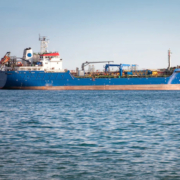Intermodal transportation vs Multimodal Transportation. By utilizing multimodal and intermodal freight transport, shippers may optimize the routes they take and the total cost of carrying their goods.
Dealing with a single carrier might be simpler. But in many cases, the shipping expenses can be better accessible by utilizing different carriers.
Do you want to get the most out of multimodal and intermodal freight transport systems? Well, it is up to you to have a solid understanding of Intermodal transportation vs Multimodal Transportation. Get an idea about how they function and the meanings of the terminologies associated with them.
What is Multimodal Transportation?
In this transportation medium, the transfer of goods is possible from one location to another by utilizing at least two modes of transportation. This can include air, sea, rail, or road. But there is just one bill of lading for the entire trip.
It describes the various modes of transportation and the companies that provide them. Still, it emphasizes that the carrier is ultimately accountable for everything that happens during the trip.
To put it another way, multimodal shipping refers to situations in which all aspects of the journey are controllable by the same company. They even fall within the purview of the same agreement. This indicates that the same business will be responsible for transporting your goods across all legs and modes of transportation.
You have the choice of collaborating with a business that offers all of these possibilities. Thus, you can even get into a single contract with an agent.
What are the advantages of multimodal transportation?
A few important advantages of multimodal transportation are:
- Accurate tracking of goods happens. This is through the use of a single shipping provider that handles delivery from one location to another
- Access to inaccessible regions of the world becomes easier. It is hence maintaining a single point of accountability and liability
- Reliability in terms of delivery on time as well as management
- There is very little coordination of the logistics, which results in additional expenses for the shipper.
- Another illustration of this would be Sea-Air. It is quicker than shipping on its own but more cost-effective than air freight alone.
- Coordination and communication costs can be reduced when there is only one contract to manage, which results in cost savings. Because you need to utilize only one tracking interface instead of numerous different ones, rather than your cargo’s movement can be tracked with ease while using Multimodal, as was previously said.
What are the disadvantages of multimodal transportation?
Now let’s talk about a few of its basic drawbacks you need to know:
- If foreign standards are available, there is a possibility that the products will run into legal and practical issues.
- Terminals are frequently inspected for safety reasons. This cause a delay in the operation of the terminals.
What do you need to know about Intermodal Transportation?
This process transfers commodities from their point of origin to their ultimate destination. It occurs through the utilization of more than one mode of transportation. There is a different carrier responsible for each mode. And each mode operates under its contract.
In a nutshell, a particular shipping business handles the logistics of each phase of the shipment. Therefore, the shipper is important to manage multiple contracts.
Finding the lowest possible delivery cost is not the same as locating the most efficient route. However, to acquire the best possible price for the door-to-door shipment, using more than one transporter is occasionally preferable. The disadvantage of this approach is that it calls for increased hands-on labor and logistics coordination.
Learn all about: What is Intermodal?
List of important advantages of intermodal transportation
The following are some of the advantages of intermodal transportation:
- Shippers can negotiate reduced prices for each leg of the journey.
- Make the most of the adaptability and specialized care is given to the cargo handling at the ports
- Decrease their overall carbon footprint by selecting transport companies that are friendly to the environment.
- Easier access to equipment, more control over capacities, and a choice of transport times
What are its basic disadvantages of it?
- Less quickly, reducing expenses has elevate to a higher priority.
- A lower level of dependability is due to the high number of service providers accountable for their work.
- I kept tabs on all the different suppliers and collaborated with them to find answers to questions regarding delivery times.
- An increase in expenses resulted from the requirement to monitor and maintain many contracts with various vendors.
- Cranes for containers make it easier to carry goods using many modes of transportation. But they are difficult to find and more expensive.
Conclusion: Which one will serve your needs more effectively?
Both intermodal transport and multimodal freight transportation systems have their advantages and disadvantage that are unique to themselves. Multimodal process requires to sign a single contract. However, when you use Intermodal, you are required to sign multiple contracts. This is the primary distinction between the two.
These two modes of Intermodal transportation vs Multimodal Transportation reduce shipping expenses. They shorten the amount of time it takes to deliver packages. However, many organisations opt for multimodal transportation when cost and convenience are weighed against one another.
Read More:
Intermodal Transportation Advantages and Disadvantages
Characteristics of Intermodal Transportation, How It May Affect Freight Industry And Its Future
Examples of Intermodal Transportation, How they work and their Impacts










